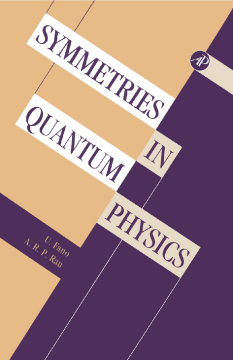
Additional Information
Book Details
Abstract
This text focuses on the physics of symmetries, developing symmetries and transformations through concrete physical examples and contexts rather than presenting the information axiomatically, mathematically, and abstractly. Readers are introduced gradually to advanced mathematical procedures, including the Wigner and Racah algebras and their applications to various symmetry groups. The book also includes some of the latest research on the use of non-invariance and non-compact groups in the consideration of relativistic and many-particle problems of atoms and nuclei.
This book is an updated replacement for the text Irreducible Tensorial Sets (Academic Press, 1959). Parts A and B of the present book grew out of occasional lectures in the intervening decades at the University of Chicago, where it became neccessary to update or elaborate upon certain points. Part C has been built more recently to deal with innovations and new information in the field of mathematical physics. The book as a whole develops the subject of symmetry from a physical point of view, allowing students and researchers to gain new insight on their subject. This book can be used both as a text and as a reference by students and scientists in the field.
Adapts and extends the earlier Irreducible Tensor Sets (Academic Press, 1959) to classroom use
Extends to multi-particle systems and relativity
Includes problems in each chapter for homework assignments
Embraces the latest research on non-invariance groups
"Written by the distinguished professor Ugo Fano of the University of Chicago and one of his brilliant collaboratos, A. R. P. Rau of Louisiana State University, is divided into three parts: Parts A and B grew out of a thorough elaboration of the classical monograph by Fano and G. Racah, while Part C, devoted to higher symmetries than su(2, the algebra of angular momenta, is new and justifies the more general title of the present work. The high level of discussion of the theory, as well as the small number of physical applications worked out in detail, makes the book more suited to readers with some knowledge of angular momentum theory rather than to beginners,..."
--MATHEMATICAL REVIEWS
